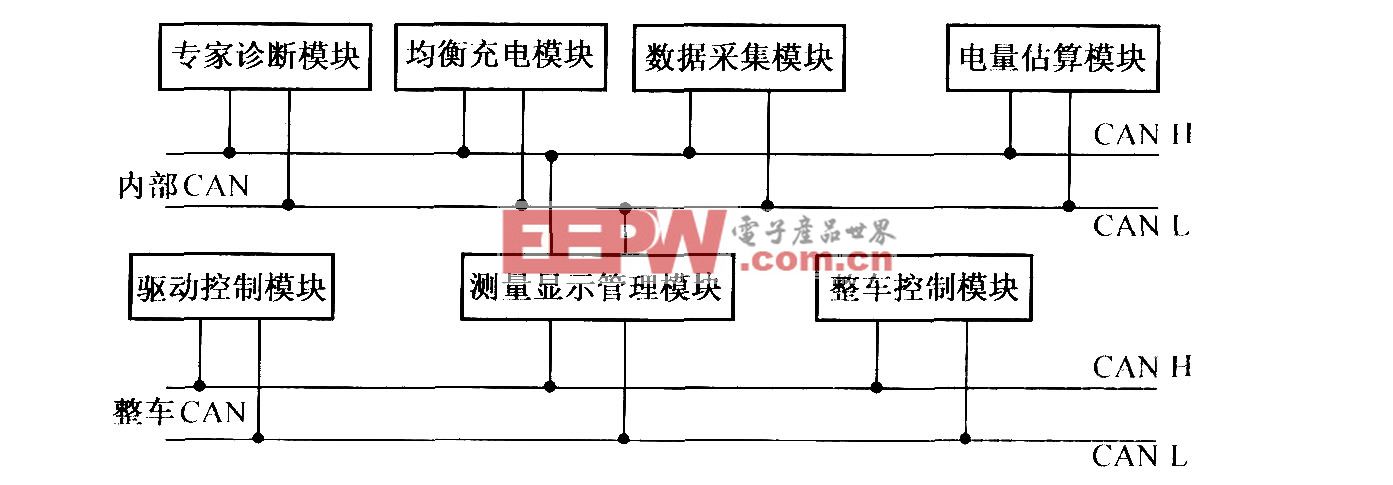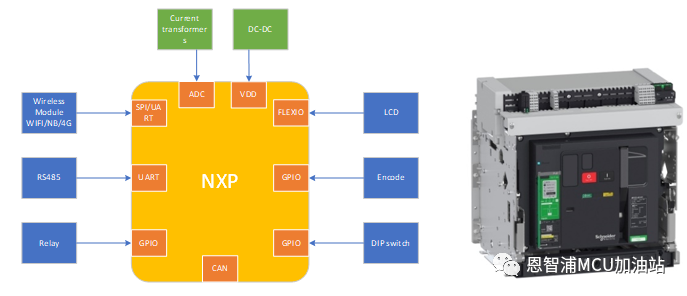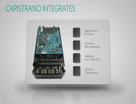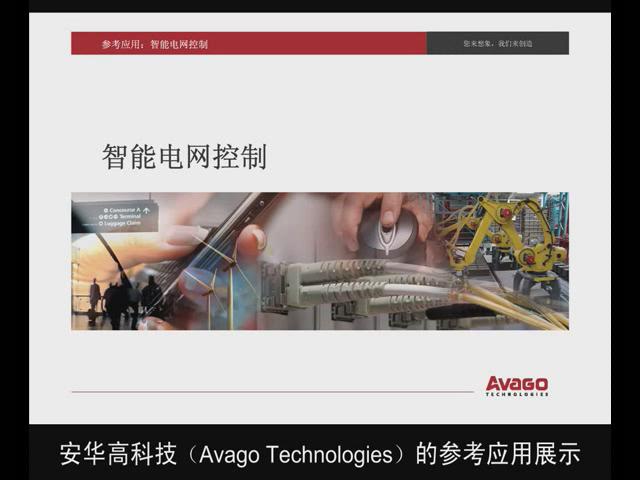用资产管理系统推动智能电网的投资
Electrify Smart Grid Investment with Asset Management
用资产管理系统促进智能电网的投资
Keywords
Smart Grid, Asset Management, Predictive Maintenance, Power Equipment, Substation Automation, Transmission Distribution, Transformers, Restoration, Cable Faults, Circuit Breakers, Regulators
关键字
智能电网,资产管理,预见性维护,电力设备,变电站自动化,输配电,变压器,恢复,电缆故障,断路器,调节器
Overview
Everyone agrees that the Smart Grid can enable consumers to conserve and reduce energy costs. However, this also goes against the incentives (earnings per share) of every independent energy supplier. Conceivably, utilities can lose additional revenue with every smart meter installed. Without a compelling business case for electric power transmission and distribution (TD) companies,
the smart electric grid will not be sustainable. The benefits of predictive asset management, which can reduce outages, restoration time, and maintenance costs for distributed assets, provide compelling value that can help mitigate the high cost of smart grid automation and spur adoption of the Obama Smart Grid initiative.
概述
每个人都同意智能电网可以让消费者减少能源消耗,但对于以提高每股盈利为目的的能源供应商来说,他们反对这项计划。因为非常显然,每安装一台智能电表,能源企业就会损失一些收入。如果不能给电力电网企业一个有说服力的商业利益,智能电网计划是难以持久的。预见性资产管理系统可以帮助电力电网企业降低储运损耗,缩短恢复周期,以及降低分散资产的维护成本。这就为这些企业提供了一项非常现实的商业利益,帮助他们降低实行电网自动化的成本,从而更加容易接受奥巴马智能电网计划。
Electric Power TD Needs to Get Involved
Despite huge automation investments in the power generation industry, TD has yet to deploy substation automation in a significant way. The little automation deployed typically uses proprietary SCADA systems. These systems may talk with ISOs, but can't easily talk with each other, inhibiting communication between different TD companies and creating islands of automation. Without integrated open automation systems and the associated infrastructure, TD cannot enjoy access to information to improve productivity and reduce cost. The TD industry needs to collaborate with automation and equipment suppliers and understand how to benefit from automation and infrastructure investments to meet future demand.
应该将电力输配电系统包括在内
尽管发电行业有巨大的自动化投资,但输配电还没有为变电站部署较完善的自动化系统。这些非常基本的自动化系统都采用专用的SCADA系统,它们可以采用ISO规范通信,但比较难以实现相互间的通信,抑制了不同的输配电公司之间的系统通信,从而成为不同的自动化孤岛。如果不能采用开放式的自动化系统和彼此关联的基础设施,输配电系统就不能获取信息以提高生产率和降低成本。在输配电产业需要与自动化和设备供应商合作,了解如何从自动化系统和基础设施的投资中受益,并满足未来的需求。
For more than two decades, there has been too little in the way of TD investment, resulting in a decaying infrastructure driven to its limits; an infrastructure that is prone to fail at the slightest hint of increasing peak electrical demands. This, combined with an inexperienced workforce, unreliable power equipment, environmental impact, increasing information needs, and the recent availability of government funds for smart grid development, means that TD companies should be investing now. However, response has been mixed.
二十多年来,对输配电的投资实在是太少了,导致陈旧的基础设施运转到了极限。电力高峰时段的轻微变化就容易导致电力基础设施的崩溃。。此外,缺乏经验的工作人员、可靠性不高的电力设备、环境影响、越来越多的信息需求,以及最近政府推出用于智能电网发展的专项资金,都表明应该对输配电企业投资了,然而,业内对此反响不一。
The Smart Grid by itself does not necessarily provide long-term financial benefits for power TD companies. On the other hand, commercial and industrial customers that are willing to take the time to learn how to exploit the technology can benefit by reducing electric consumption and lowering their monthly bills. However, more incentives are clearly needed to drive electric power TD investment.
智能电网的本身并不一定能为输配电企业提供长期的财务收益,商业和工业用户很愿意花时间学习如何利用这项技术减少电力消耗,从而减少每月账单。显然需要更多的激励来推动输配电设施的投资。
Hidden Value of Asset Management Provide Incentives
Electric power TD utilities companies should evaluate smart grid investments in conjunction with TD automation and control and asset management. Combining these elements in a single initiative makes the smart grid a more compelling investment opportunity for TD utilities.
资产管理的隐藏价值带来激励
电力输配公用事业公司应评估智能电网投资,连同输配电自动化控制和资产管理。将这些因素结合到一个单一的计划使智能电网成为输配电企业的一个更令人信服的投资机会。
Predictive asset management technology that combines predictive and other advanced maintenance techniques, has been very successful in the process manufacturing and power generation sectors. Predictive asset management techniques can provide even greater benefits for TD. With TD assets dispersed across hundreds or thousands of square miles, predictive asset management solutions are even more compelling because of the time required to travel to and back from the site. Unlike a plant, where assets are confined within the physical facility, inspecting TD assets requires travel back and forth from regional centers, increasing the time customers are without service, reducing revenue, and negatively impacting system reliability. Deploying predictive maintenance, enabled by intelligent devices, automation systems and digital communication systems, provides technicians with remote access to equipment health from central locations, reducing labor cost and the time it takes to restore power to customers. This improves the financial payback for TD companies, providing them with a tangible incentive to jump into the smart grid fray; an incentive that can provide sustainable value long after the government funding subsides.
预见性资产管理技术,结合预测和其他先进的维护技术,在过程制造和发电行业一直很成功。预见性资产管理技术甚至可以为输配电企业提供更大的利益。输配电资产都分布在数百万平方公里内,维护人员往返现场需要花费大量的时间和费用,这也是预见性资产管理技术变得更具有吸引了。与资产集中在一定区域内的电厂不同,检查输配电资产需要从区域中心来回往返,增加无服务消耗的时间和减少收入,并对系统的可靠性造成消极影响。采用由智能设备、自动化系统和数字通信系统组成的预见性维护,技术人员可以远程诊断设备工作状况,减少劳动力成本和为客户恢复供电所花费的时间。这为输配电公司带来切实可见的投资回报,激励他们建立智能电网的积极性,,在政府资金补贴之后仍可以带来持续的价值。
In the process sector, predictive asset management provides intelligent maintenance solutions that predict the health of assets, allows operators to intervene before a failure, and significantly extends equipment life. Predictive maintenance for TD assets can also protect assets and reduce catastrophic failures that can potentially bring down large sections of the electric grid. By including the automation and control communication infrastructure with smart grid investments, TD companies can have a ready-made communication channel that will enable improved electric transmission and distribution control and remote equipment diagnosis. As a result, technical crews will only mobilize when needed to complete actual equipment repairs.
在过程行业,预见性资产管理提供预测资产健康状况的智能维护解决方案,允许运营商在故障发生之前进行干预,显著延长设备寿命。对输配电资产来说,预见性维护也可以保护资产,并减少可能造成大面积电网崩溃的灾难性故障。通过包括自动化和控制通信基础设施与智能电网的投资,输配电企业可以有一个现成的通信渠道,将使得电力传输和分配控制能力和远程设备诊断能力进一步提高。其结果是,技术人员将只在必要时动身完成实际设备维修。
Focus on Critical High Value Equipment First
The most efficient TD asset management solutions provide continuous online monitoring. They deploy intelligent electronic devises (IEDs) and soft and hard sensors with associated diagnostic software with open bi-directional digital communications. This enables fast distribution of alarms and allows operators to analyze equipment faults and determine remedial action before sending the
crew to the site.
第一重点放在关键的高价值设备
最有效的输配电资产管理解决方案提供连续的在线监测。他们采用智能电子设备(IEDs)和软型和硬型传感器,以及相关的、带有开放双向数字通信能力诊断软件。这使得报警可以快速分配,允许运营商分析设备故障,并决定在派遣人员到现场之前采取补救措施。
Of all the assets in the TD electric grid, transformers can be the most problematic. Power transformers can be quite old and have limited backup when they fail. By measuring load, voltage, current, temperature, transformer oil quality, status of ancillary equipment, and other parameters, operators can remotely determine the health of the transformer and load tap changers, (electromechanical voltage regulators in transformers). Some simple measurements enable many issues to be diagnosed. These include water contamination, insulation damage, excessive heat, arcing, and mechanical wear of electromechanical components. In addition, operators can fine-tune loading based on actual temperature to maximize electrical output without damaging the transformer.
在所有输配电网的资产之中,变压器的问题是为最棘手。相当多的变压器已经老化,一当失效,备件也很有限。通过测量负载、电压、电流、温度、变压器油的质量、辅助设备状况以及其他参数,操作人员可以远程确定变压器和负载分接开关的机电式整流器的状况 。一些简单的测量使许多问题得到诊断。这些问题包括水污染、绝缘损坏、过热、电弧和机电元件的机械磨损。此外,操作人员可以根据实际温度对负载微调,以最大限度地提高电力输出而不至于损坏变压器。
Last Word
The Smart Grid initiative offers TD companies an opportunity to implement a Smart Grid with substation control systems, digital communications, and asset management systems that will not only conserve energy at the end user level but also improve the reliability of the grid and reduce operating costs for TD.
结束语
智能电网计划为输配电公司提供了一个建立具有变电站控制系统、数字通信和资产管理系统的智能电网的机会,将不仅在最终用户层面节约能源,而且还提高了电网的可靠性和为输配电降低运营成本。
TD companies should seize this opportunity and provide an open network infrastructure, including the sensors necessary for asset management. Open systems will allow future interoperability throughout the grid and potentially across the globe. The access to information will increase TD revenue and profitability by optimizing energy delivery and increasing uptime. In addition, information can be easily directed to EAM/CMMS maintenance scheduling systems for efficient workforce management and logistics.
输配电企业应该抓住这个机会,并提供一个开放的网络基础设施,包括资产管理所必需的传感器。开放系统将实现未来整个电网的的互操作性,并可能在全球各地互通。获取信息将可以优化能源供应,增加正常运行时间,增加输配电企业的收入和利润。此外,信息可以很容易地用于EAM/CMMS维护调度系统,实现有效的劳动力管理和物流。
(本文作者为ARC顾问集团高级分析师Wil Chin先生)














评论